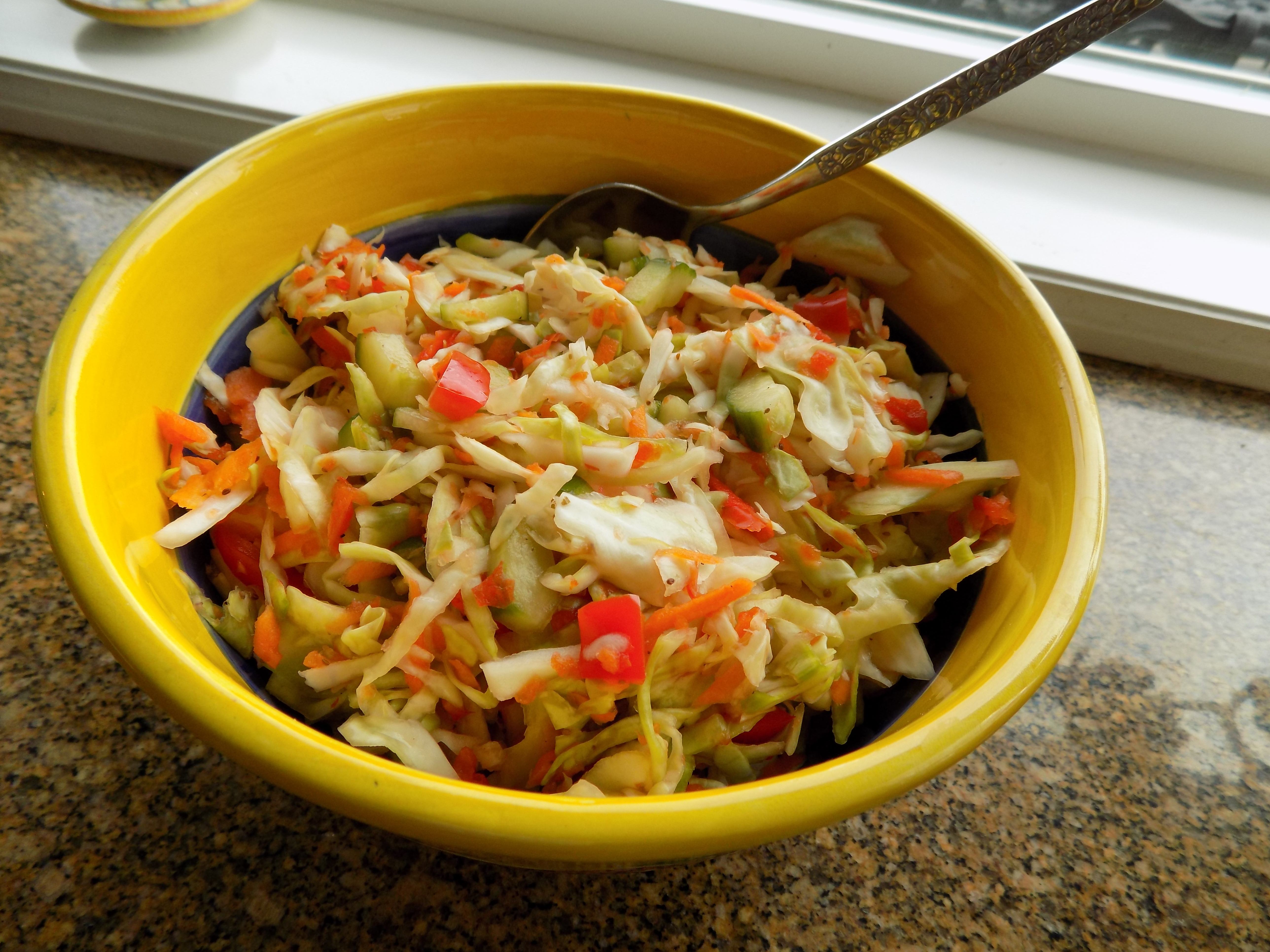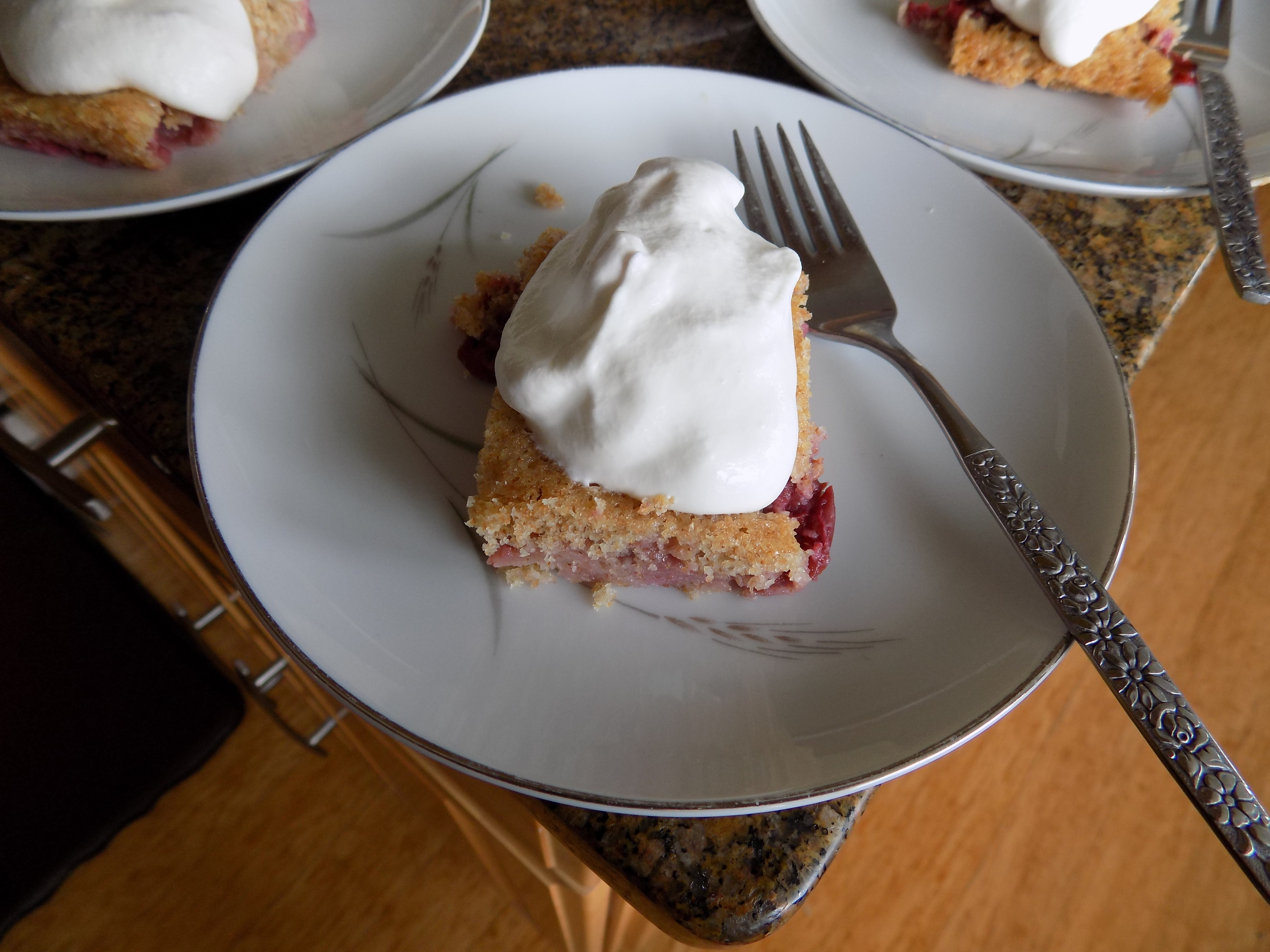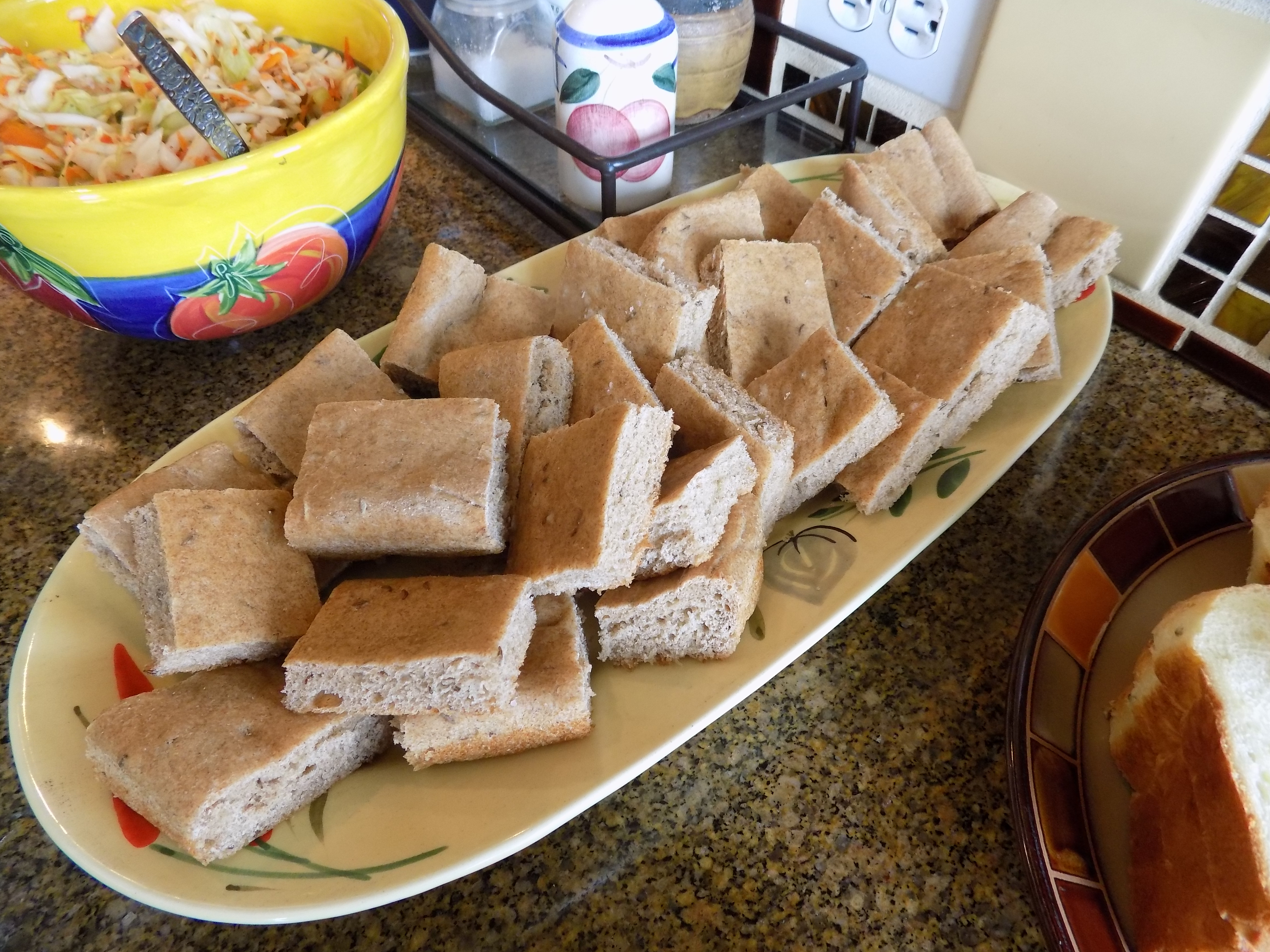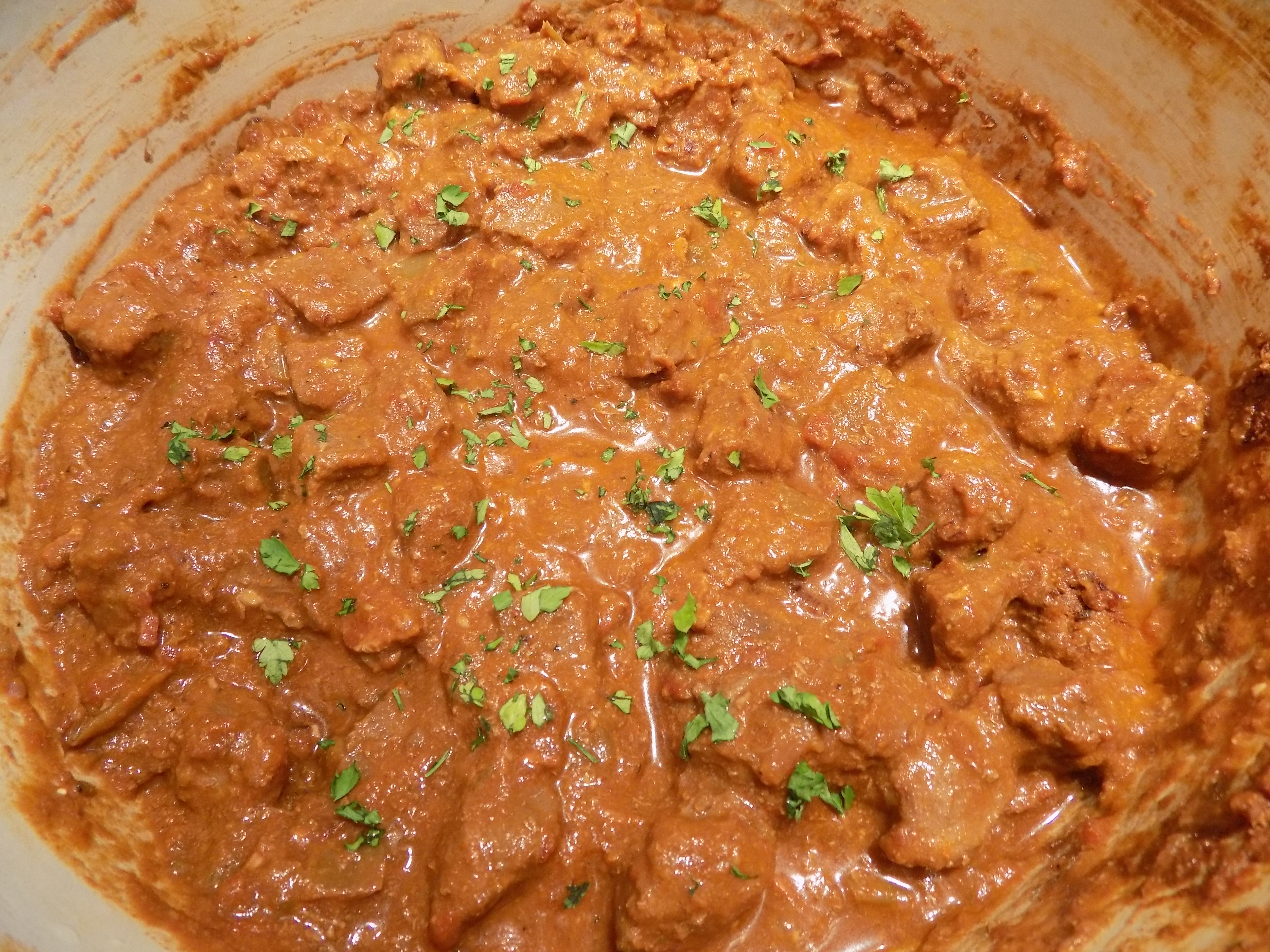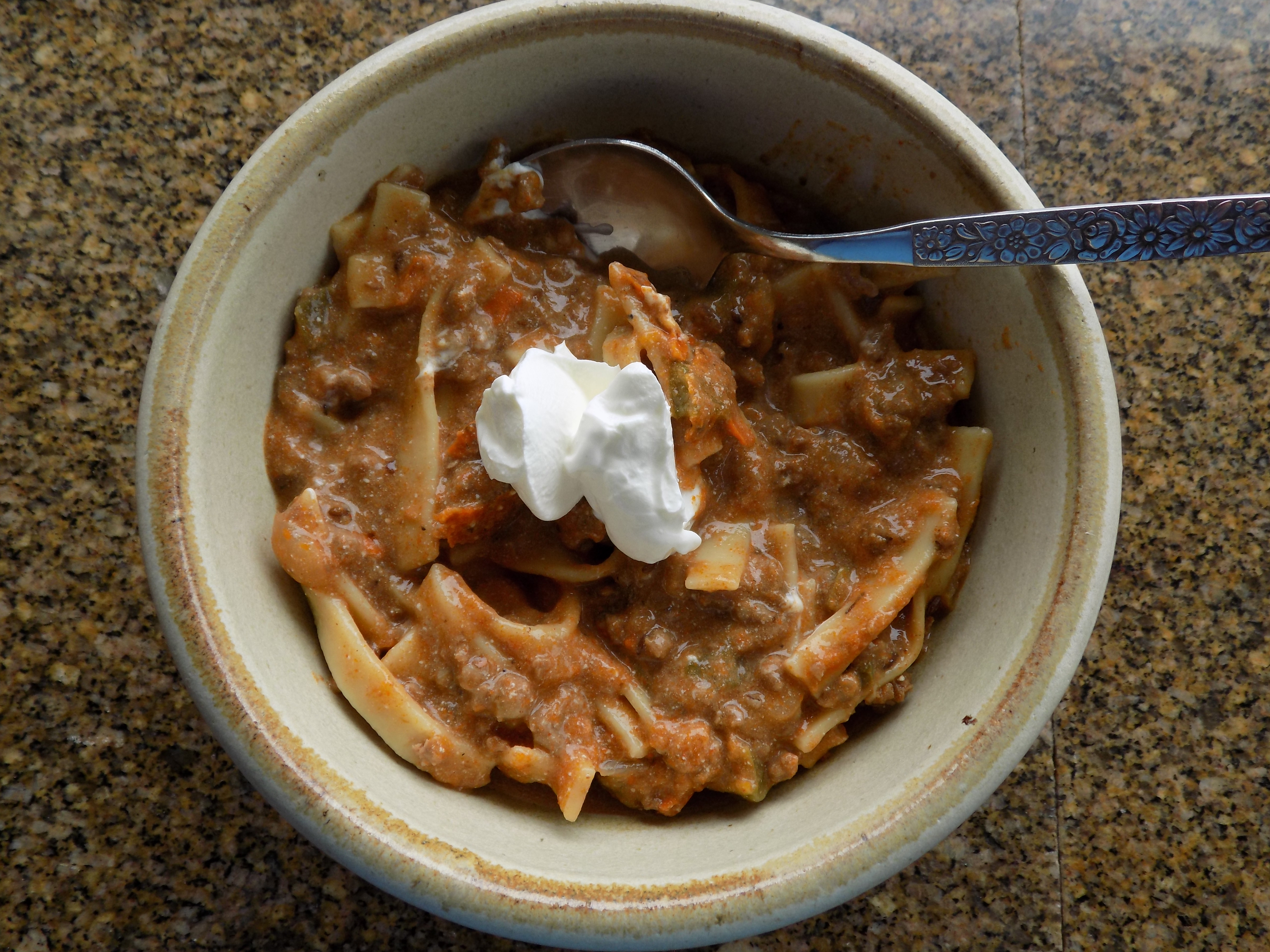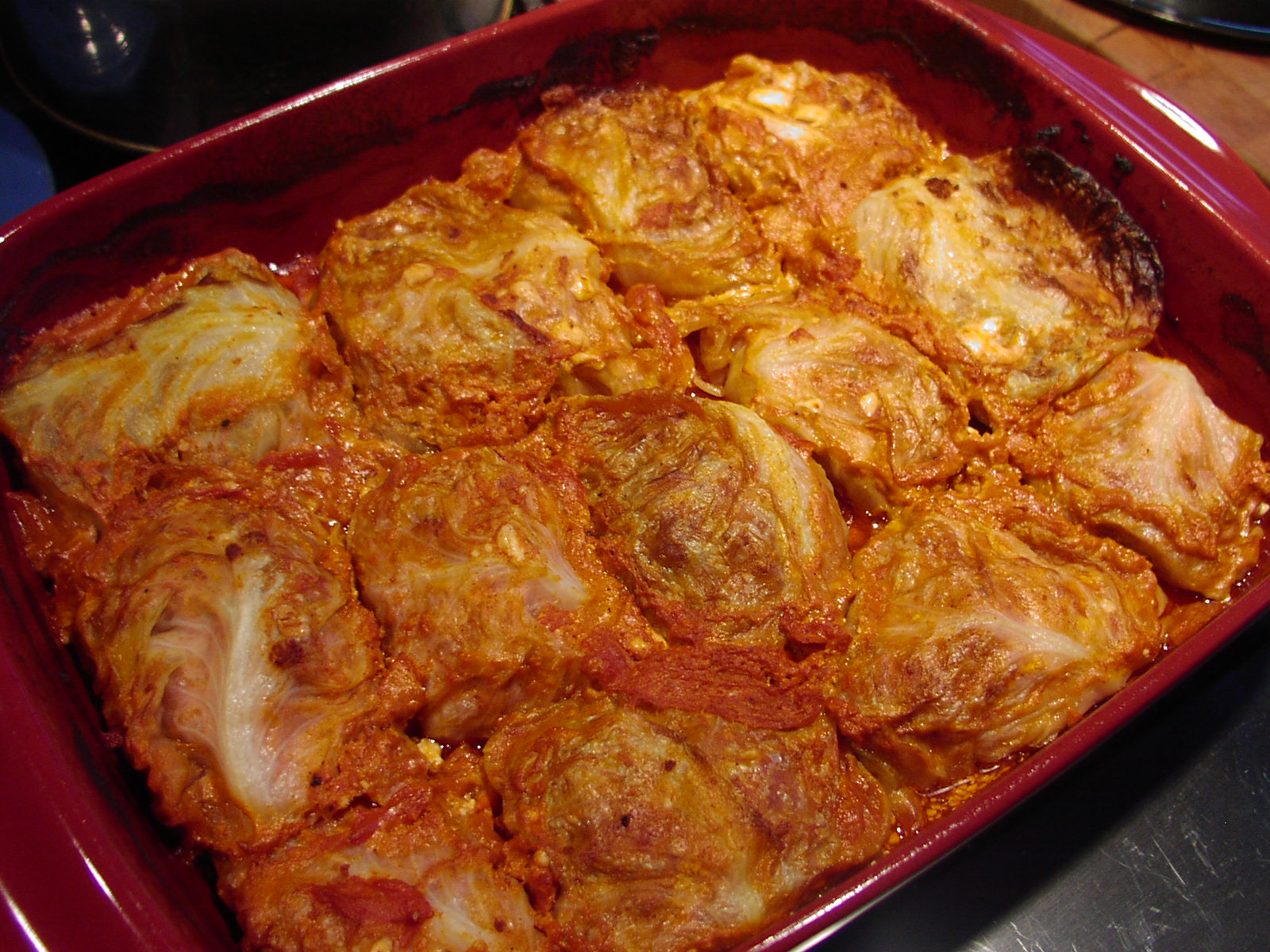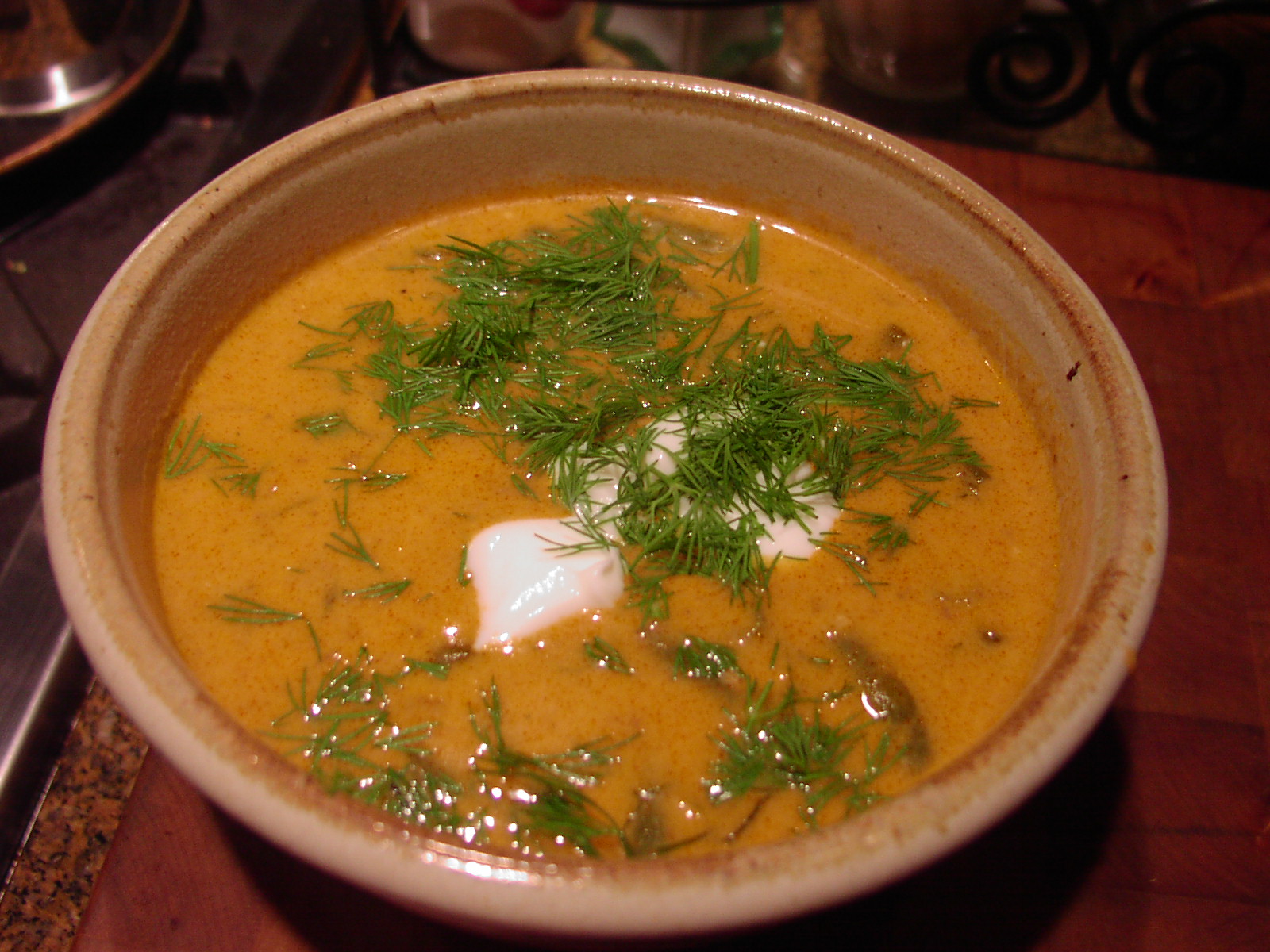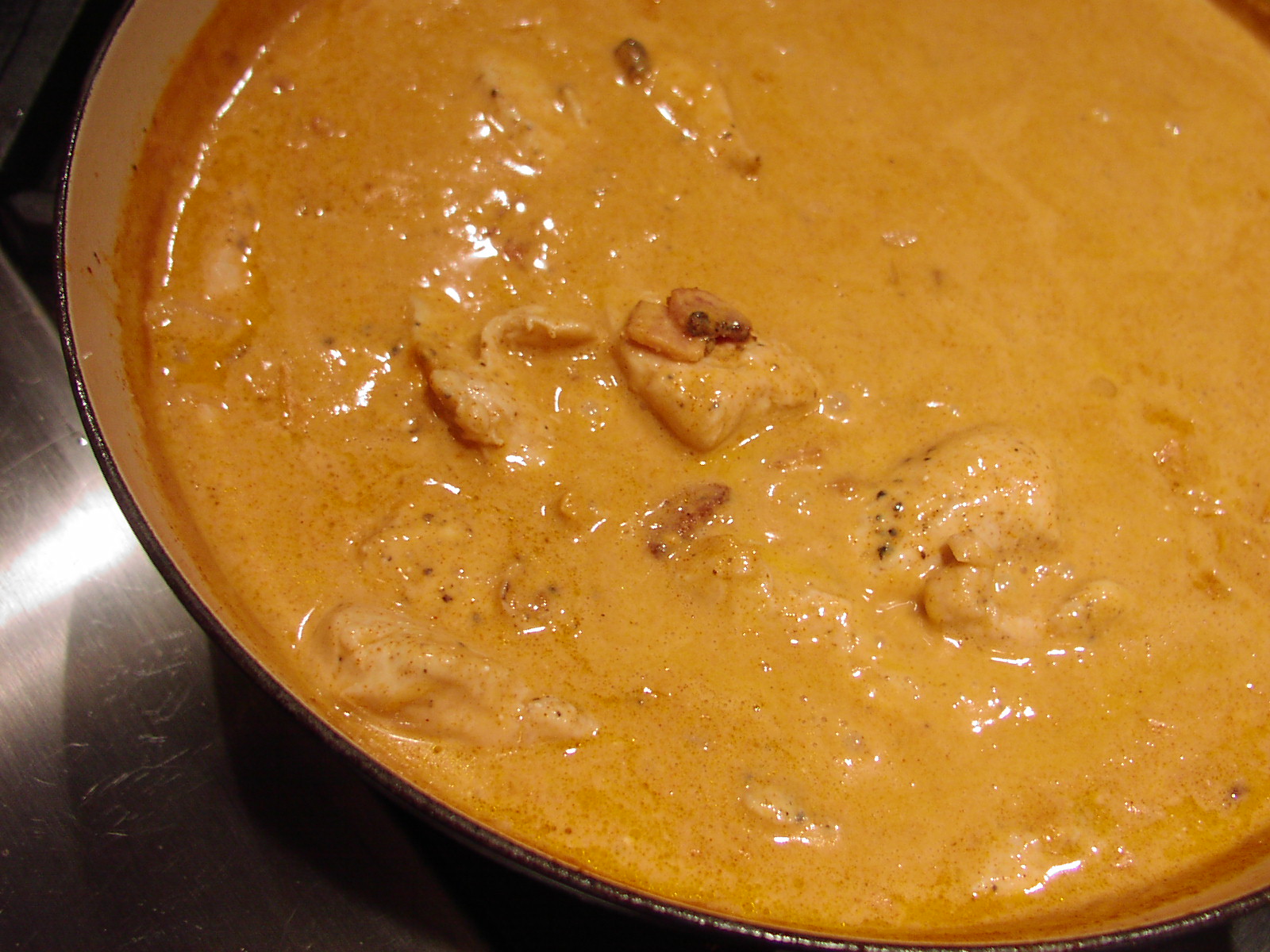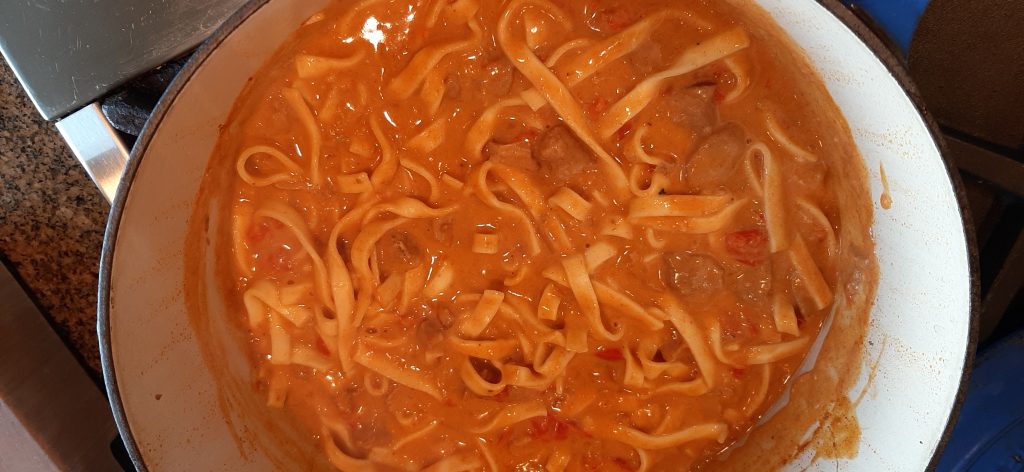
Before leaving on our spring trailer vacation, I decided to take some pork tenderloin along with us. Mr. C. loves to grill, and pork tenderloin is so wonderful when BBQed. Plus, I had a new marinade recipe I wanted to try.
But this was not the vacation to do any grilling. It rained, it snowed, and the wind was exceedingly busy. So, I kept putting off using the tenderloin. Finally, the day our good friends Margo and Jim were due to arrive, and I had previously told them not to worry about dinner after their long drive, I decided to put the pork tenderloin to good use. It was either that or go to the local grocery store and try to find some other kind of meat to serve. And grilling was out of the question. So, I took inventory of what I had on hand that could work its’ way into a pork dish and decided on some type of pork stew. And what immediately came to mind was paprikash.
So, the recipe you find below is the result of me making do with what I had on hand. And it worked. All 4 of us declared it a winner and the stew had been so very easy to prepare. Even in our trailer.
Sure, I had to simmer the stew for about 90 minutes to tenderize the meat and break down both the onion and red bell pepper. While occasionally giving the whole mess a stir. But, really easy to do in a trailer. (Especially when you must remain in the trailer anyway because of inclement weather!) And as it was burbling away, it smelled so good that I was surprised some of the other campers weren’t lined up at supper time to claim their fair share! So, this is definitely a recipe I will be making in our trailer again. (And at home too, of course!)
So, if you too love Hungarian food and are particularly fond of tender pork in a paprika and sour cream sauce, this is the recipe for you. Easy to build, fairly inexpensive to produce, and totally yummy.
Well, that’s it for today. We are off to a piano recital this evening in Seattle. Works by Frédéric François Chopin. One of our favorite composers. So, I am stoked. What can be better than paprikash for dinner followed by Chopin for dessert? Not a thing I can think of.
Peace and love to all.
Since I am posting this recipe the day after I wrote the preface, I feel duty bound to mention that the concert was fantastic. And if you live in the Seattle area and love music, you might avail yourself of the concerts that are performed at Meany Hall on the U of W campus by the School of Music faculty. Since we are seniors, our concert tickets cost us $10 each. If you are not a senior or a U of W student, the cost is still reasonable – only $20. The best bang for your buck in town. And to hear and watch a world class pianist like Craig Sheppard is magic in and of itself. And hearing all of Chopin’s nocturnes played so beautifully was heavenly. To learn more about upcoming recitals etc., visit the U of W School of Music’s web site.
2 T. veggie oil
1 pork tenderloin, cut into ¾-inch cubes
1 tsp. salt
freshly ground black pepper
1 yellow onion, chopped
1 red bell pepper, chopped
2-3 garlic cloves, roughly chopped
4-6 tsp. paprika, or more to taste
2½ c. chicken stock
2 T. unsalted butter, room temp.
3 T. flour
1 c. sour cream, or more as needed
2-3 c. dry thick egg noodles, cooked al dente (I use Homemade Style Country Pasta Egg Pasta) (Costco)
In a large pot, heat the oil. Add the pork cubes, salt, and pepper. Brown the pork. Add the onion, red bell pepper, garlic, and paprika. Stir and cook for a couple minutes. Then add the chicken broth, bring to a boil, reduce heat, and simmer covered for about 90 minutes or until the pork is tender.
Meanwhile mash the butter and flour together. (I use a table fork) When the pork is fork-tender, stir the beurre manié (the French name for butter and flour mushed together as a thickening agent) into the pork. Let burble for a couple of minutes or until the sauce thickens. (If the sauce doesn’t thicken enough, add another beurre manié using 1 tablespoon butter and 1 tablespoon flour). Reduce the heat to very low and whisk in the sour cream.
Add the al dente noodles to the sauce and serve immediately.



